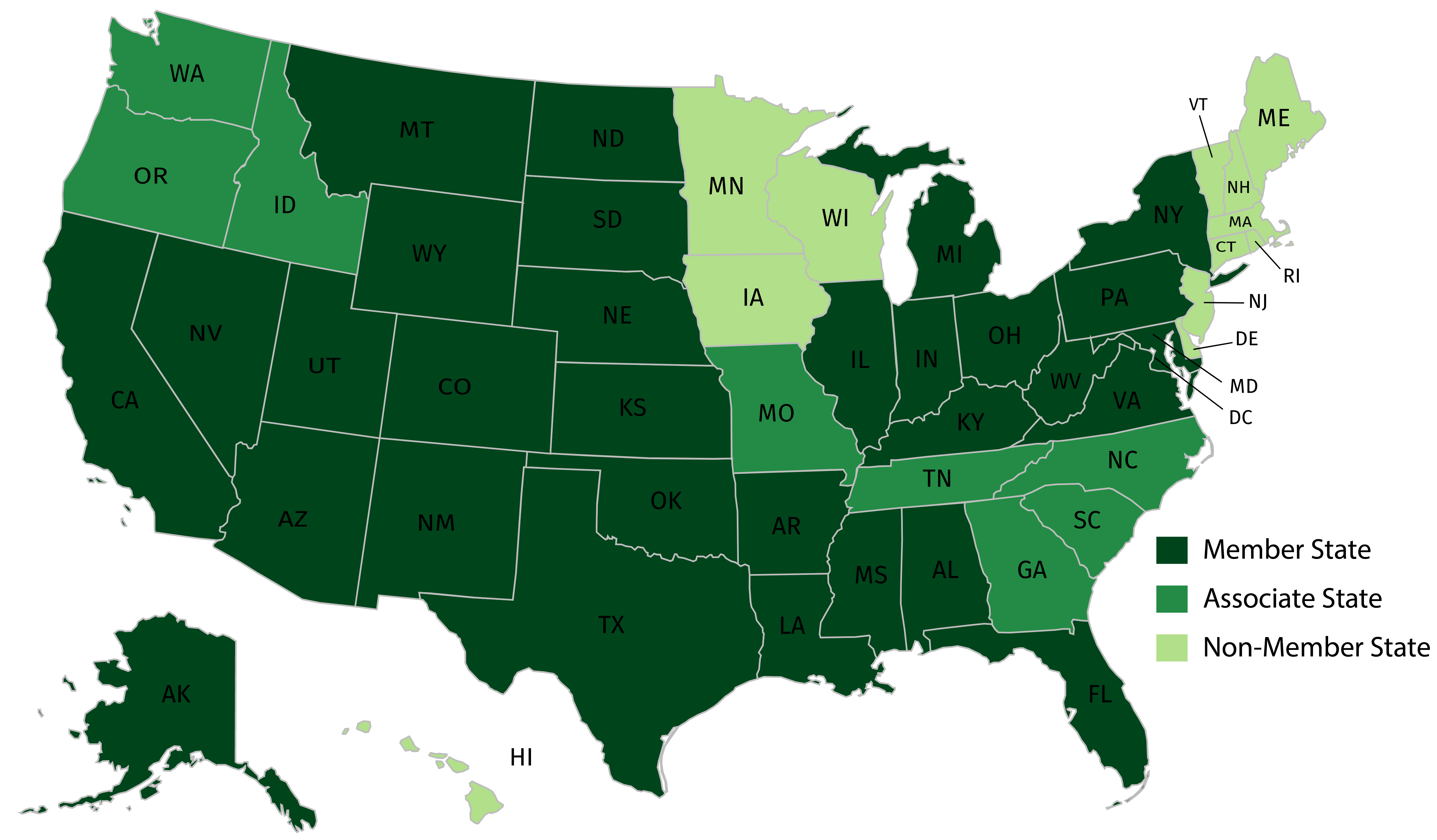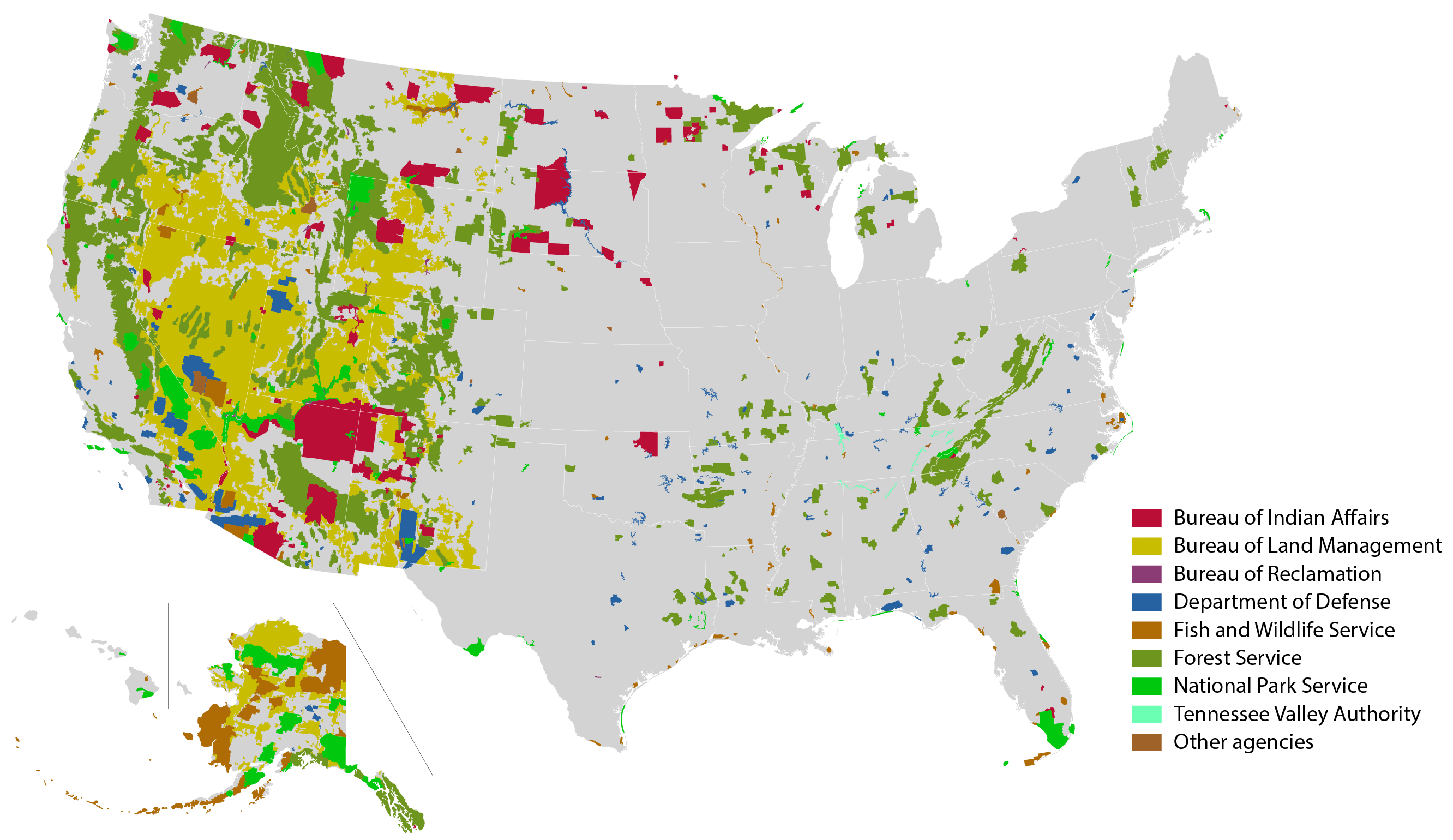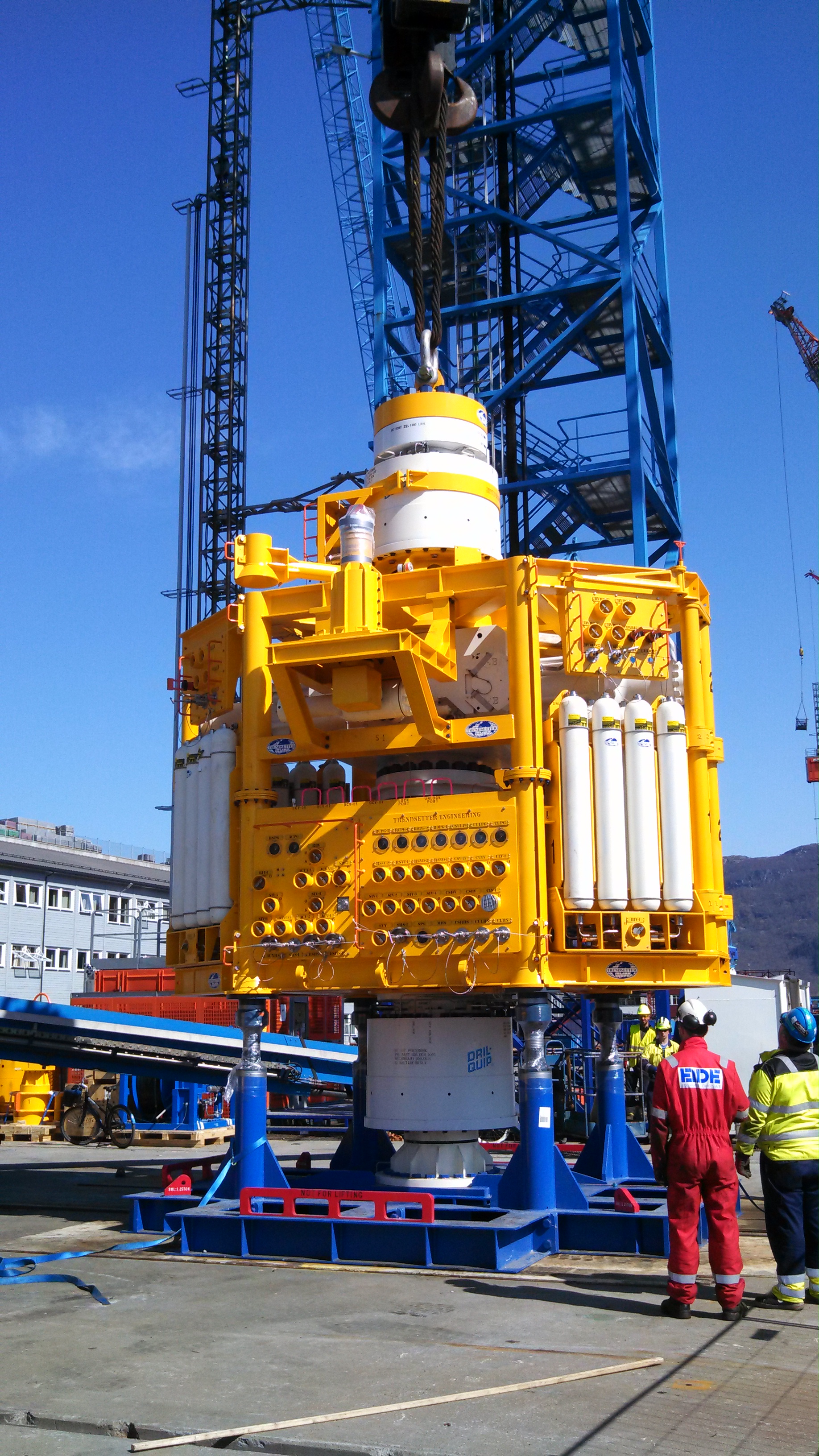Are Gas And Oil Companies Bound By The Clean Water Act?
Federal and state regulation of exploration, production, transportation, and more Regulation of oil and gas operations has existed in various forms for over 100 years.1 Regulation has several objectives: protecting the environment (including air and h2o quality), protecting cultural resources, protecting workers' and the public'due south wellness and rubber, and reducing wasted resource.2,3,4 Federal, land, and local governments each regulate various aspects of oil and gas operations. Who regulates what depends on country ownership and whether federal regulations or country laws apply. In general, near drilling and production is regulated past the states. Federal regulations primarily safeguard water and air quality and worker safe, too equally exploration and production on Native American lands, federal lands, and the Outer Continental Shelf. Regulations are implemented past the executive branches of local, state, and federal government based on the laws enacted past local, country, and federal legislators. Public input is a formal office of regulation development. The Make clean Air Human action (1963), the Clean Water Human action (1972), and the Safe Drinking Water Act (1974), including after revisions to these laws, form the basis of most federal regulation of the oil and gas manufacture. State roles in regulating oil and gas drilling and product were formalized by the Interstate Oil & Gas Compact Commission (IOGCC), which formed in 1935 to set up standards for oil and gas drilling and develop production regulations that the states agreed to enact.vii States belonging to the Interstate Oil & Gas Meaty Commission. five Image credit: American Geosciences Institute, produced with mapchart.net.6 Exploration and product on state and private land are regulated by each of the 33 oil- and gas-producing states. States also regulate all oil and gas operations in state waters that extend from the coast to three to 9 nautical miles from the shoreline, depending on the country. Local zoning may command some activities such as the minimum altitude wells and other facilities must be fix back from homes and businesses. State regulations vary from state to state and over fourth dimension. Early on land regulations were largely focused on preventing waste, ensuring the rights of mineral owners to develop their resources, and conserving resource to ensure the viability of hereafter production. Environmentally focused regulations have get increasingly prominent over time, peculiarly since the 1970s.9 Country-regulated activities include seismic and other geophysical surveys, leasing, drilling, hydraulic fracturing, oil and gas product, well closure, and site restoration. States enforce their regulations through permitting and regulatory inspections. Federal and Native American lands in the United States. Colors signal which federal agency oversees and regulates activities on these lands. Image credit: U.S. Geological Survey.13 On Non-Federal State The federal role in regulating exploration and production primarily focuses on environmental protection. The Environmental Protection Agency (EPA) sets standards on drinking water and air quality under the authority of the Clean Air Human action, the Make clean Water Act, and the Condom Drinking Water Act.fourteen In nigh cases, the EPA allows states to develop and implement the regulations necessary to meet federal standards. In a few areas, the EPA's regulatory part is more directly: On Federal Land (Onshore) The Bureau of Land Management (BLM) has jurisdiction over almost all leasing, exploration, evolution, and production of oil and gas on federal and Native American lands. BLM rules and standards for drilling and productnineteen require all operations on federal land to comply with state and local regulations and protect life, property, and ecology quality. Equally of 2018, some federal drilling and production regulations enacted, revised, or proposed since 2008 are being re-evaluated or rescinded past the electric current Administration.20 The National Park Service regulates the small amount of oil and gas activity in National Parks (roughly 550 active wells in 201521), where the federal government owns the country surface merely not the underlying oil, natural gas, or mineral resources.22 Federal decisions about specific constraints on drilling and production on federal country (onshore and offshore) are based on the National Environmental Policy Human action (1970).23 This human action requires federal agencies to assess the environmental affect of major federal actions, mainly by producing Ecology Impact Statements or Ecology Assessments. Offshore The federal authorities regulates offshore exploration and production for the Outer Continental Shelf (OCS), which extends from the edge of state waters (either 3 or ix nautical miles from the declension, depending on the land) out to the edge of national jurisdiction, 200 nautical miles from shore.24 The Bureau of Bounding main Energy Management (BOEM) manages federal OCS leasing programs, conducts resource assessments, and licenses seismic surveys.25 The Bureau of Safe and Environmental Enforcement (BSEE) regulates all OCS oil and gas drilling and product. These two agencies, plus the Office of Natural Resources Acquirement, which collects and disburses rents and royalties from offshore and onshore federal and Native American lands, were formed in the 2010 and 2012 reorganizations of the Minerals Management Service. BSEE drilling and production regulations accept been extensively revised in response to the 2010 Deepwater Horizon blowout and oil spill and a National Academies assessment of ways to prevent such incidents in the futurity.26 The regulations include requirements for enhanced well design, improved blowout preventer design, testing and maintenance, and an increased number of trained inspectors.27 The current Administration is in the process of reviewing and revising these regulations. An advanced offshore blowout preventer (BOP). A BOP is a big, heavy gear up of valves fitted at the pinnacle of the well; if loftier pressures in the well overcome all other barries, the BOP is designed to close off the well and the drill pipe to preclude oil or gas from escaping. BOPs of some kind are used on all oil and gas wells. In offshore drilling, the BOP is set on the seafloor or beneath the drilling-rig deck. Onshore, the BOP is connected to the elevation of the wellbore (below the drilling-rig deck). Image credit: Agency of Safety and Environmental Enforcement.17 States regulate the operation of oil pipelines, as well as the construction and operation of natural gas gathering lines (small pipelines that movement gas from the well to a processing facility or transmission line).28,29 The federal Department of Transportation (DOT)'s Pipeline and Hazardous Materials Safety Administration regulates the operation of natural gas pipelines that provide long-distance manual and local customer distribution,30 as well as secret natural gas storage.31 The EPA regulates air emissions from refineries and fuel distribution systems, including pipelines, trucks, and fuel dispensing facilities or service stations.32 The Federal Free energy Regulatory Commission (FERC)33 regulates the transportation of oil through interstate oil pipelines just does not oversee pipeline operations. FERC also reviews applications for the construction and functioning of natural gas pipelines and liquefied natural gas (LNG) consign and import terminals to certify their compliance with safety and environmental laws. The Federal Railroad Administration (part of the DOT) is responsible for railroad safety, including rails transport of crude oil and refined products. The Pipeline and Hazardous Materials Prophylactic Administration (DOT) and the Transportation Security Administration (Section of Homeland Security) issue safe standards for railroads. Approximately 11% of crude oil and petroleum products were transported by rail in 2014, up from 2.half-dozen% in 2009.34 States and the federal government set requirements to encourage the utilize of particular energy types. Xx-nine states have renewable portfolio standards that require electric utilities to sell a minimum percentage or amount of renewable free energy.35 On the federal level, the Renewable Fuels Programme is overseen by the EPA in consultation with the Section of Agronomics. The Free energy Policy Act of 2005 and the Energy Independence and Security Act of 2007 crave that fix amounts of renewable fuel be used in place of gasoline, heating oil, or jet fuel.36 The applicable renewable fuels include ethanol, cellulosic biofuel, diesel from biomass, and other advanced biofuels. In 2018, the standards set by the EPA under authorization of the 2005 and 2007 acts require the use of 19.29 billion gallons of renewable fuels.37 This results in most gasoline containing 10% ethanol (E10). E15 and E85, with 15% or up to 85% ethanol, respectively, are locally bachelor and tin be used in some vehicles.38 Regulations not covered here include worker safety rules set by the Occupational Condom and Health Administration (see "Health and Rubber in Oil and Gas Extraction" in this series for more data); regulations protecting antiquities and historic and religious sites; and the Endangered Species Act.39 In addition, the oil and gas industry is jump by state and federal fiscal reporting laws and revenue enhancement regulations.40 Considering oil and natural gas are traded globally and many oil and gas companies operate internationally, international merchandise rules and the laws of various other countries also affect the U.S. oil and gas industry. Joy, M.P. and Dimitroff, S.D. (2016). Oil and gas regulation in the United States: overview. Westlaw, June 1, 2016. 1 Railroad Committee of Texas - Railroad Commission Milestones. Download a full PDF ofPetroleum and the Environment (free) or purchase a printed version ($19.99). Other parts in this series: Note: In financial yr 2016, production from federal and Native American lands, onshore and in the Outer Continental Shelf, was 23% and 17% of full U.S. product for oil and gas, respectively.10,11,12 Overview

Country Regulation of Exploration and Production8

Federal Regulation of Exploration and Product

Regulation of Transportation, Storage, Refining, and Marketing
Laws and Regulations Setting Energy Preferences
Other Regulations
More Resource
References
2 Interstate Oil & Gas Compact Commission – Our History.
3 U.S. Environmental Protection Agency – Regulatory Information by Sector: Oil and Gas Extraction Sector.
iv U.S. Occupational Safety and Health Administration – OSHA Police force & Regulations.
5 Interstate Oil & Gas Compact Commission – Member States.
6 Mapchart.net.
7 Interstate Oil & Gas Meaty Commission – Interstate Oil and Gas Commission Lease.
8 Interstate Oil & Gas Meaty Commission – Summary of State Statutes and Regulations.
9 Basis Water Protection Council (2009). State Oil and Natural Gas Regulations Designed to Protect Water Resources. Prepared for the U.South. Department of Free energy's National Energy Technology Laboratory, May 2009.
x U.Southward. Office of Natural Resource Acquirement – Production Data.
11 U.Southward. Free energy Data Assistants – Crude Oil Production.
12 U.Southward. Energy Information Administration – U.South. Dry out Natural Gas Production.
13 U.Southward. Geological Survey – The National Map: Federal Lands and Indian Reservations.
fourteen U.S. Environmental Protection Bureau – Regulatory Information past Sector: Oil and Gas Extraction Sector.
15 U.Due south. Environmental Protection Agency – Reduced Emission Completions for Hydraulically Fractured Natural Gas Wells.
16 U.S. Environmental Protection Agency – Actions and Notices about Oil and Natural Gas Air Pollution Standards.
17 "Model Advances Analysis of Offshore BOP Closure during Extreme Force per unit area and Flow Conditions." U.South. Agency of Rubber and Environmental Enforcement printing release, February 17, 2017.
18 U.S. Environmental Protection Bureau (2015). Minimizing and Managing Potential Impacts of Injection-Induced Seismicity from Class II Disposal Wells: Practical Approaches.
19 Bureau of Land Management – Oil and Gas: Regulations, Onshore Orders and Notices to Lessees.
20 "BLM Rescinds Rule on Hydraulic Fracturing." U.S. Bureau of State Management Press Release, December 28, 2017.
21 National Park Service (2015). Cost-Benefit and Regulatory Flexibility Analyses: U.South. Department of the Interior, National Park Service, Proposed Revisions to 36 CFR Part 9, Subpart B.
22 Electronic Code of Federal Regulations – Title 36, Affiliate I, Part half-dozen, Subpart B: Non-Federal Oil and Gas Rights.
23 U.S. Environmental Protection Bureau – National Environmental Policy Act.
24 U.South. Bureau of Bounding main Energy Management – Outer Continental Shelf.
25 Cameron Jr., B. and Matthews, T. (2016). OCS Regulatory Framework. U.S. Bureau of Ocean Energy Management report BOEM 2016-014.
26 National Academy of Engineering and National Research Council (2012). Macondo Well Deepwater Horizon Blowout: Lessons for Improving Offshore Drilling Rubber. Washington, DC: The National Academies Printing.
27 U.S. Agency of Safety and Environmental Enforcement – Regulations.
28 U.S. Pipeline and Hazardous Materials Rubber Administration – State Programs Overview.
29 Pless, J. (2011). Making Country Gas Pipelines Rubber and Reliable: An Cess of Country Policy. National Conference of State Legislatures, March 2011.
30 U.S. Pipeline and Hazardous Materials Safety Administration – Pipeline Technical Resources.
31 U.Southward. Pipeline and Hazardous Materials Prophylactic Administration – Hush-hush Natural Gas Storage.
32 U.S. Environmental Protection Agency – Clean Air Act Standards and Guidelines for Petroleum Refineries and Distribution Industry.
33 Federal Free energy Regulatory Commission – What FERC does.
34 Shea, D. et al. (2015). Transporting Crude Oil by Rail: State and Federal Activity. National Conference of State Legislatures, Oct 30, 2015.
35 Durkay, J. (2017). State Renewable Portfolio Standards and Goals. National Conference of State Legislatures, August ane, 2017.
36 U.Southward. Environmental Protection Agency – Renewable Fuel Standard Plan.
37 U.S. Environmental Protection Bureau – Last Renewable Fuel Standards for 2018, and the Biomass-based Diesel Volume for 2019.
38 U.S. Energy Information Administration (2016). Virtually all U.Due south. Gasoline is blended with 10% ethanol. Today in Energy, May 4, 2016.
39 U.S. Fish & Wildlife Service – Endangered Species Act: Overview.
40 Joy, K.P. and Dimitroff, S.D. (2016). Oil and gas regulation in the United States: overview. Westlaw, June 1, 2016.Petroleum and the Surround
one. Petroleum and the Surroundings: an Introduction
2. Water in the Oil and Gas Manufacture
three. Induced Seismicity from Oil and Gas Operations
iv. Water Sources for Hydraulic Fracturing
5. Using Produced Water
half dozen. Groundwater Protection in Oil and Gas Product
vii. Abandoned Wells
8. What Determines the Location of a Well?
9. Country Use in the Oil and Gas Industry
10. The Pinedale Gas Field, Wyoming
11. Heavy Oil
12. Oil and Gas in the U.S. Arctic
13. Offshore Oil and Gas
fourteen. Spills in Oil and Natural Gas Fields
15. Transportation of Oil, Gas, and Refined Products
sixteen. Oil Refining and Gas Processing
17. Non-Fuel Products of Oil and Gas
18. Air Quality Impacts of Oil and Gas
19. Marsh gas Emissions in the Oil and Gas Industry
twenty. Mitigating and Regulating Methyl hydride Emissions
21. Regulation of Oil and Gas Operations
22. Health and Condom in Oil and Gas Extraction
23. Subsurface Information in the Oil and Gas Industry
24. Geoscientists in Petroleum and the Environment
Glossary of Terms
References
Source: https://www.americangeosciences.org/geoscience-currents/us-regulation-oil-and-gas-operations
Posted by: palmerjohictor.blogspot.com


0 Response to "Are Gas And Oil Companies Bound By The Clean Water Act?"
Post a Comment